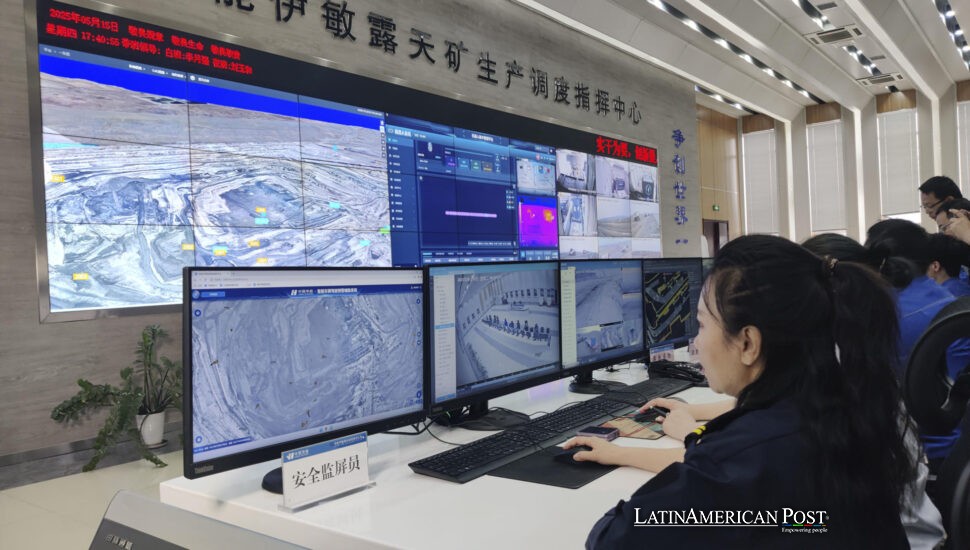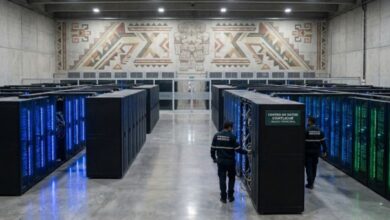Latin American Mining Eyes AI Breakthrough Fueled by Huawei

A new set of artificial intelligence solutions will significantly change mining in Latin America. Methods like haul trucks that people control from far away and data analysis completed as it arrives can solve big problems about getting more done, keeping people safe, and protecting the environment. This gives reason to hope for improved results in that region.
A Changing Mining Landscape
Latin America holds vast reserves of critical minerals—often called future-facing commodities—essential to the global energy transition. Governments in the region expect responsible resource development will create needed revenue. The revenue may lower socioeconomic differences and fund public services. Social and environmental problems appear as mining occurs. Concerns over deforestation, water pollution, and insufficient consultation with local communities frequently spark opposition to large-scale operations.
Data from GlobalData indicates that more than 7,925 surface mines operate, 477 of which are in South and Central America. This points to the region’s importance to the mining sector. Nations in Latin America consider how to use their mineral wealth with care. Disagreements with local populations continue as a possible problem. The outcome of these endeavors depends on firm regulation, accountability, and open decision-making. Such support is often hard to find in troubled political environments.
The Core Challenges Facing Latin American Mining
Open-pit mining is problematic. Though it is cost-effective, it greatly disturbs nearby habitats and societies. Large piles of waste rock and dangerous tailings sometimes flow into neighborhood water, threatening whole drainage areas.
Dust and noise pollution become part of daily life for those living near mining areas, while heavy machinery contributes to greenhouse gas emissions. Even after closure, the land is frequently left scarred and environmentally degraded, challenging any prospects for reclamation.
Such issues result in legal battles and stalled projects. They damage a state’s power to balance economic growth and environmental care. Governments study new methods to lessen conflict and reduce industry’s effect on the environment. More often, they search for technological solutions.
AI-Enabled Innovations Offer New Possibilities
Artificial intelligence may assist in solving some pressing problems. A Chinese technology company, Huawei, presented a new system. That system includes several electric haul trucks that AI manages. The trucks operate without drivers in surface mines. This technology is already being deployed at the Yimin coal mine in Inner Mongolia (northeastern China), an area known for its harsh winters. EFE reports that vehicles connect through 5G. The connection allows vehicles to coordinate movement. Vehicles plan transport routes. Battery use becomes more efficient through management. Safety receives a significant increase. Emissions see a reduction.
In a Latin American context, these AI-powered solutions hold promise for mitigating some of the sector’s most critical challenges:
Safety and Accident Reduction: Accidents at mines are frequently connected to mistakes humans make. Driver fatigue is one of these mistakes and is still a significant worry. The new system from Huawei substitutes a place for batteries in the space where the truck driver used to sit. This substitution removes the danger of drivers being sleepy or not paying attention. This level of automation could dramatically reduce accidents at large-scale open-pit operations across Latin America, protecting workers and nearby communities.
Lower Carbon Footprint: One major environmental critique of mining centers on its heavy reliance on diesel-powered machinery. By transitioning to electric and semi-autonomous trucks, operators can reduce CO₂ emissions. While a complete green transformation hinges on how the electricity is generated, even incremental moves toward cleaner technology could make a notable difference.Optimization and Efficiency: AI processes a lot of data. From sensors observing soil to maintenance procedures that increase equipment lifespan, the technologies decrease spending and limit energy waste. By doing that, they lessen monetary strains that push businesses toward prioritizing immediate profit over community or environmental protection.
Leveraging Technology to Ease Social Conflict
In Latin America, stakeholder engagement is a persistent challenge. Communities want a fair share of the economic windfall and a seat at the decision-making table. Governments, for their part, aim to minimize unrest while balancing commercial interests and ecological responsibilities.
Artificial intelligence helps with improved data collection and transparency. This helps calm rumors, build trust, and promote accountability. Companies can show they follow firm rules with real-time environmental monitoring. It reassures people that operations will not harm land or waterways. Openness with many details may grow community acceptance, lowering the chance of protests and project shutdowns.
GlobalData says carefully observing mine site data is essential to understanding general patterns and preventing problems. The company has a database with more than 33,000 mines and projects. The database supports informed decisions by governments and civil organizations. With risk assessments that use artificial intelligence, the use of such databases can greatly change the planning and oversight done by officials, miners, and communities.
Reimagining a Sustainable Mining Future
As Latin America contends with growing resource demands —especially for minerals critical to the global energy transition— embracing advanced technologies like Huawei’s AI-driven trucks could prove transformative. Peru has a lot of copper. Brazil has a lot of iron ore. A change to automated operations that are more sustainable provides a way to lessen harmful effects. This change also increases productivity. Government policies that encourage AI adoption could cause mines to be safer. The policies could also cause fewer emissions. Local populations could get more equitable benefits.
Of course, significant hurdles remain. Funding such cutting-edge solutions could be challenging for smaller operators, and complex terrain or lack of infrastructure in remote regions might hamper large-scale implementation. Technology alone cannot resolve fair revenue distribution, public consultation, and environmental protection issues. Yet, these AI-powered innovations represent a broader strategy to modernize mining in a manner that respects both local communities and fragile ecosystems.
Also Read: Bolivian Artisans Revive Ancient Awayu Textiles In Modern Designs
Ultimately, the future of Latin American mining will rest on how well stakeholders integrate new technologies with sound governance. That subtle equilibrium could decide whether a singular chance is seized, or current divisions grow. Governments and companies can get closer to a situation where big resource removal matches neighborhood prosperity and climate objectives that span the planet. This is done through a promise to be open and to use very new tools.





